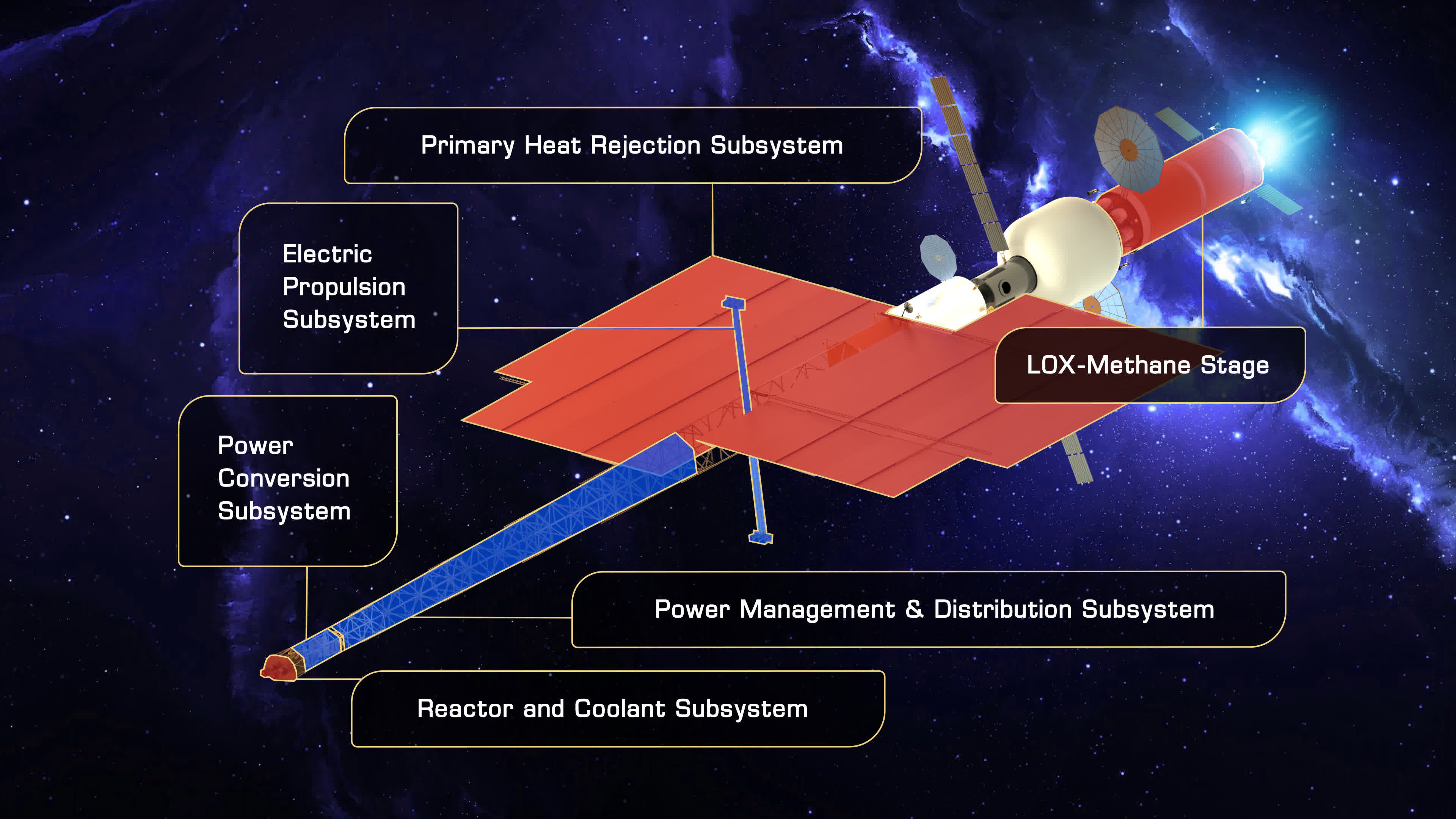Serving tech enthusiasts for over 25 years.
TechSpot means tech analysis and advice you can trust.
Why it matters: The journey all the way to Mars and back exacts a huge toll in terms of human lifetime – it entails spending multiple years in the hostile environment of space. But NASA is exploring some ambitious concepts that could make that epic round-trip a relatively trim two-year endeavor.
NASA is working on a nuclear electric propulsion system that would involve robotically assembling a space radiator the size of a football field out in the void. The project has moved beyond the ideation phase since the agency has already green-lit funding for early-stage research over the next two years.
The project is dubbed MARVL, which is short for Modular Assembled Radiators for Nuclear Electric Propulsion Vehicles. A partnership between NASA centers and external partner Boyd Lancaster, it aims to break down a key component of nuclear propulsion into more manageable, modular pieces.
One of the big hurdles with nuclear electric propulsion is figuring out how to efficiently expel all the waste heat generated by the nuclear reactor powering the system. The leading design calls for a colossal radiator array, roughly the length of a football field when deployed, to release that heat out into space.

The main problem is trying to squeeze something that massive into the narrow confines of a rocket. Even fully compacted, the radiator would be too big and unwieldy.
MARVL's approach is delightfully simple in theory: if the whole radiator can't be launched at once, why not send it up in pieces and have robots assemble it off-planet? This approach will mean multiple launches, but it also means any rocket parts will not be constrained by launch vehicle dimensions.
Once the MARVL radiator components reach orbit, robots would connect the panels, allowing a liquid metal coolant such as a sodium-potassium alloy to flow through. The coolant would dissipate waste heat from the nuclear electric propulsion system.
It's still an immense technological challenge, but one that plays to NASA's robotics expertise.
NASA also says that this approach will influence the design of the very spacecraft it aims to serve.
"Existing vehicles have not previously considered in-space assembly during the design process, so we have the opportunity here to say, 'We're going to build this vehicle in space. How do we do it? And what does the vehicle look like if we do that?' I think it's going to expand what we think of when it comes to nuclear propulsion," said Julia Cline, a mentor for the project in NASA Langley's Research Directorate.
Of course, actually developing a full-scale nuclear spacecraft is still quite distant. But prototypes like MARVL are bringing key pieces of the puzzle into reality.
Image credit: NASA









 English (US) ·
English (US) ·